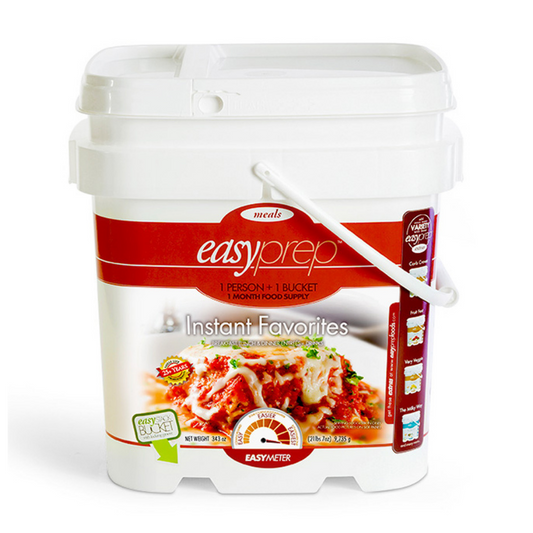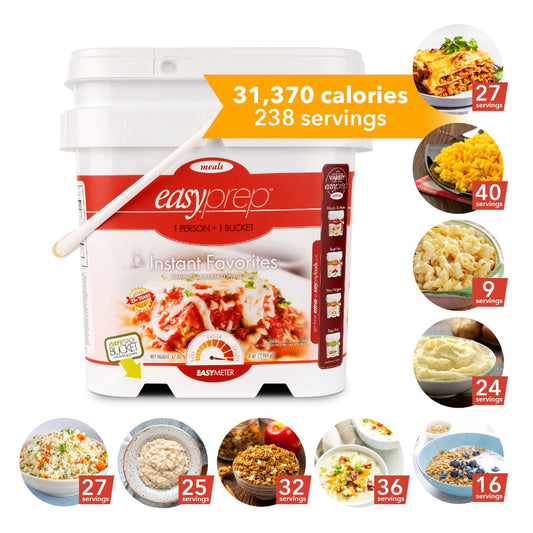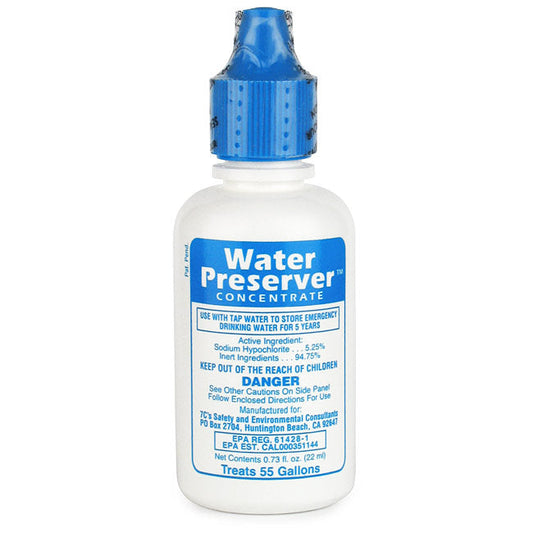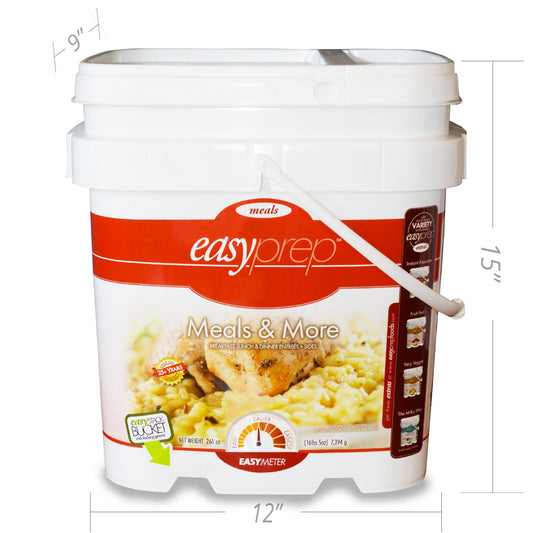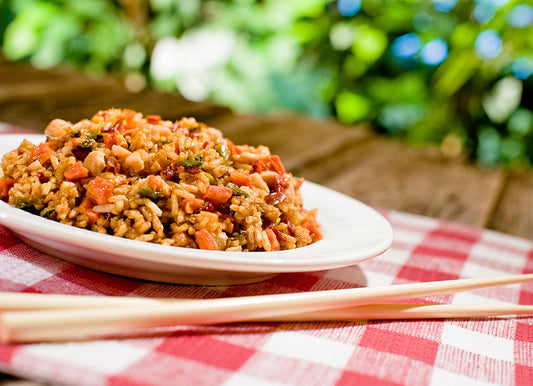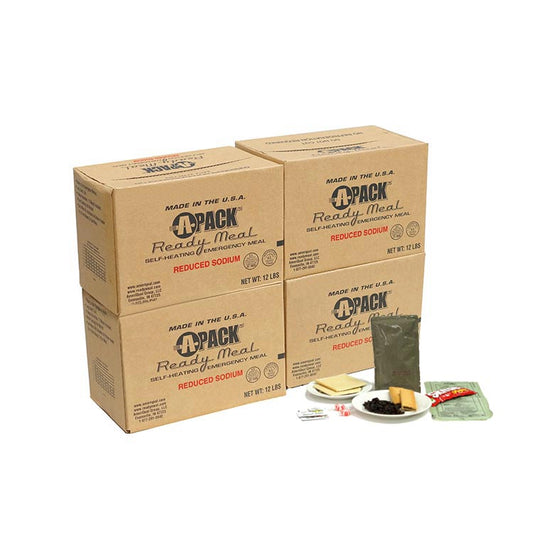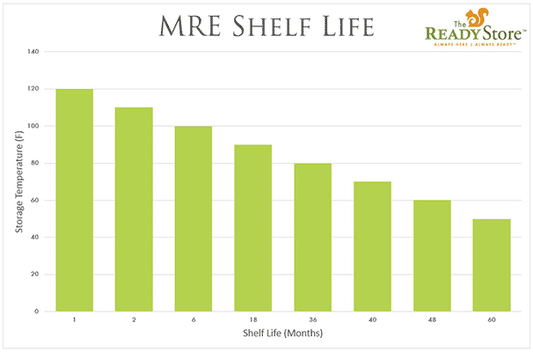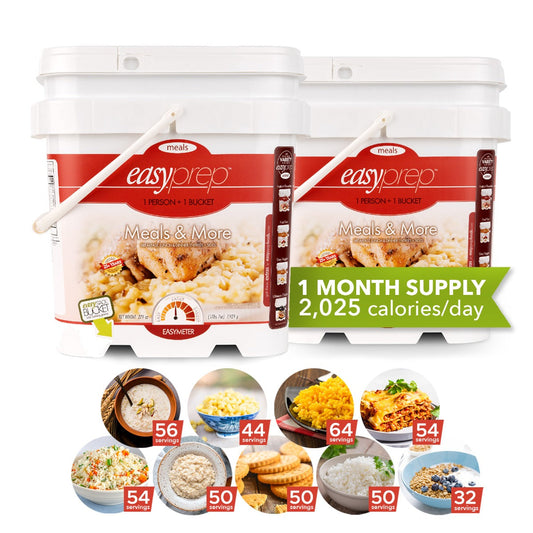How to Best Store Your Food Storage
One of the largest questions with food storage is “Where should I put this?” Where you store your food storage has a large impact on how long it will last and how good the food will taste once you use it. What type of container you use to store the food and the conditions of the area you store it in, have a large impact on the food. Below we’ve listed out a few things you need to consider with your food containers and the conditions in which you store them. Let’s get started!
Containers There are three types of packaging you’ll find for typical food storage supplies: Mylar pouches, metal cans or plastic containers. Each will provide a slight difference with your shelf life and storage requirements.
Cans. Commonly known as #10 cans (so named for its volume), these container often use oxygen absorbers to increases shelf life. In fact, this method of storage has proven to yield the longest shelf life (10-30 years) for dry foods. However, the seams of the can should be carefully examined and maintained, as faulty seams are the primary threat to food quality long term.1
Pouches. High-quality Mylar pouches can keep a meal for 15-25 years thanks to their superior oxygen barriers protecting the food. When the bags are thicker, contain oxygen absorbers and are stored correctly, it all comes together to create an effective, lightweight storage system.
Large Buckets. Buckets are effective at holding large amounts of food while keeping smells contained and sunlight blocked. As stated earlier, the most effective bucket storage also uses Mylar bagging on the interior of the bucket. This combination has proven to be one of the most effective at preserving food long term. Jars. This storage container isn’t used commercially much anymore, but continues to be the container of choice for many food storage DIYers. So long as the seal is airtight and the jars have been properly cleaned, glass jars are an effective form of storage. However, the food is more exposed to light, so it is important to keep glass jars used for food storage in the dark as much as possible.
Oxygen Absorbers Reducing oxygen is crucial because it helps ensure flavor, fights rancidity, nutritional breakdown, and keeps food free of infestation. Historically, two practices have been used to remove oxygen - nitrogen flushing and oxygen absorbers. Nitrogen flushing was a process that attempted to push out oxygen by flushing the food containers full of nitrogen and expelling the oxygen. By its nature, effective nitrogen flushing was a difficult process that was hard to get right. Nitrogen flushing also had a somewhat negative impact on the flavor of the food.2 The other, more proven3, method is placing oxygen absorbers inside food storage containers, which removes oxygen from the environment they are placed in through a chemical reaction. It’s recommended that your food storage has an oxygen absorber inside the can or mylar bag.
Storage Conditions When considering where to store your food storage, find a place that is dry, dark and cool. In order to properly store your food, focus on two main areas: Moisture and temperature. There are other important criteria to consider too, such as light levels, air circulation and avoiding infestations, but dealing with moisture and temperature should be your top priorities. Moisture. This is enemy number one when it comes to safe food storage. Moisture causes all sorts of problems to your food, namely deteriorating food value and promoting an environment for harmful micro-organisms to grown in. In fact, the absence of water is the main reason dehydrated and freeze-dried foods last so long. Wherever you keep you food, make sure it won’t come in contact with water, typically by avoid storage directly on the ground. Don’t forget that a lot of food can even spoil from the moisture in the air. Temperature. Remember the two Cs - consistency and coolness. Avoid storing your food in a location that changes temperature drastically depending on the season (so, typically no garages or attics). Additionally, keep your food away from heat sources like freezers, furnaces or refrigerators, as all of these utilities generate varying degrees of heat in their rooms depending on the season. The ideal temperature for most food storage is below 70 F.4
Light. Direct sunlight destroys nutritional value and rapidly degenerates food quality, appearance and taste.5 Additionally, direct sunlight often raises temperatures, which spoils food. Light is only a threat if you are storing your food in containers other than plastic containers, pouches or barrels.
Infestations. Insect or vermin infestations occur when at least one of the above criteria are compromised. If your food is wet, smelly, warm or exposed to the air, it is only a matter of time before a colony of insects starts growing in your food or vermin sniff it out. Keeping your food in ideal storage conditions not only preserves it longer while maintaining nutritional value, it also ensures only you and your family will have a chance to eat it and not any unwanted critters.
What to Take Away From All This? So, how should you store your food storage? First look for a product that is sealed well, contains an oxygen absorber and offers a protective barrier from light and odors. After you’ve purchased your food, make sure to store it in a cool, dry and dark location that will have consistent temperatures.
[1] Halling, Van Noy, Ogden & Pike. 2007. “Quality of white rice retail packaged in No. 10 cans for long-term storage.” Poster presentation at Institute of Food Technologists Annual Meeting. Accessed online Sept 23, 2013 at https://goo.gl/kE60Tb [2] Mexis & Kontominas. 2010. “Effect of oxygen absorber, nitrogen flushing, packaging material oxygen transmission rate and storage conditions on quality retention of raw whole unpeeled almond kernels (Prunus dulcis).” Food Science and Technology. Volume 43, Issue 1. Pp 1-11. [3] Purcell, Barber and Johnson. 1993. “Use of Oxygen Absorbers in Dry Pack Canning.” Accessed Online Sept 23, 2013 at https://goo.gl/lrWCN2 [4] Norseth, Amy L. 1986. “Storage of Low-Moisture Foods: Effect of Storage Temperature, Time and Oxygen Levels on Consumer Acceptability and Nutrient Content.” Accessed online Sept 23, 2013 at https://goo.gl/LCz604 [5] Shelley, Reid A. 1978. “Solar Drying of Foods: Effects on Drying and Treatment Method on Vitamin Retention.” Accessed online Sept 23, 2013 at https://goo.gl/S1x6D1

